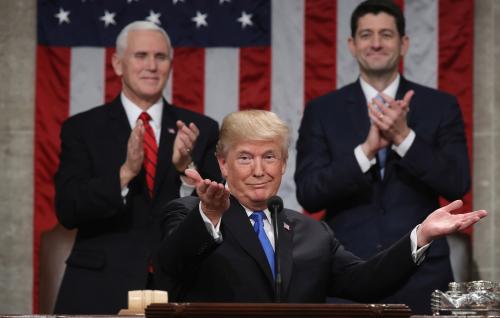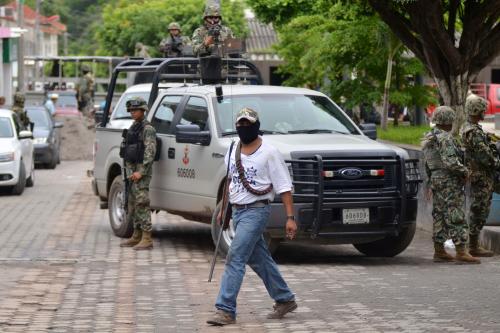A recent visit to Mexico City found Mexicans despondent. Mexicans from distinct backgrounds and with differing political perspectives moaned. Unemployment at the historic rate of 6.2 percent, a 9 percent fall in the economic activity index, dwindling oil resources and a Standard & Poor’s downgrading of Mexican investments have left the economic elite and street vendors sulky. Drugs and crime remain an issue, although the lurid and frequent assassination of mayors, police officials and journalists was concentrated in specific geographic areas. In the rest of the country, kidnapping, robbery and extortion affected ordinary citizens more than President Calderon’s “War on Drugs”.
Underlying the anxiety generated by the economic recession and public insecurity was the sense of impotency: the weakness of the presidency, the enduring power of political parties without fresh ideas and the endurance of intractable problems that have burdened the Mexican state for 80 years. Together, they explain why Mexicans feel stuck in a rut. What is the reality behind this negative perception? Are the underlying facts as gloomy as the general mood?
First, criminal violence remains a serious problem, with over 12,000 drug related deaths since President Calderon came to power in December 2006. Daily news coverage of lurid corpses suggests that murder is pervasive and exacerbates the growing lack of trust in the federal government’s ability to control narco-trafficking. The pre-Christmas revenge killing of the family of the Navy commander who captured and killed narco-baron Arturo Beltran Leyva presented a startling example of the government’s inability to protect its own people.
For the most part, the President’s war on drugs is concentrated in the northern border, Michoacán and Sinaloa. The rest of the nation tolerates levels of intentional homicide that are lower than a decade ago. More pervasive and critical to a sense of well-being is the widespread extortion and kidnapping – not of the rich and famous, but of local storekeepers and small restaurant owners. In 2008, the Attorney General’s office reported 825 kidnappings, 30 percent higher than in 2006 and more than double the average in 2002-2005. As a result, according to a recent poll undertaken by Mexicans United Against Delinquency, 3 out of 4 Mexicans perceive greater insecurity in May 2009 than they did 12 months earlier. 72 percent of those polled admitted fear that they, or someone close to them, would be kidnapped. Less than 20 percent of the population believes that President Calderon’s war against the cartels is succeeding. This sense of insecurity is real, contributing to a sense of hopelessness that the government can keep people safe.
Closely related to the sense of insecurity are the increased levels of corruption among government officials. According to Transparency International’s Corruption Perceptions Index, Mexico’s was ranked 89th among 180 countries in terms of “the degree to which corruption is perceived to exist among public officials and politicians”- a fall of 17 places from the year before. (Higher rankings reflect less corruption, according to this index.) Mexico scored 3.3 on a scale from 0 to 10, with 0 reflecting the highest levels of corruption. The reason for this score is citizens’ belief that crime, drug trafficking and the lack of transparency have affected overall levels of trust in federal, state and municipal governments. At the state level, accountability and improvements in the judiciary are minimal.
Second, the power of public and private monopolies, such as PEMEX (petroleum), CEMEX (cement), TelMex (fixed telephone lines) and TelCel (wireless market), as well as certain labor unions prevent citizens, through their elected representatives, from bringing about change. In the days of PRI governance, these monopolies negotiated within the political party for comparative advantages, and compromises were reached behind closed doors. With the end of the PRI hegemony, these powerful institutions – be they private or public – now negotiate in the public domain, enabling viewers of television news to comprehend the strength of the monopolies and the relative weakness of the presidency. Furthermore, Congress should be a forum for debating and resolving the relative benefits of these monopolies, but instead, legislators are beholden to those same public and private institutions for campaign contributions and jobs. Recent Congressional debate on the wisdom of opening up the Mexican telecom market to foreign investors may indicate a willingness to envisage greater competition.
Third, PEMEX (the petroleum monopoly) has provided 40 percent of the annual federal budget, with all company profits transferred, via taxation, to the federal government. As a result, since the early 1980s, PEMEX has been starved of resources for investment in new technologies and new or deeper oil fields. PEMEX has relied on Cantarell, the second largest oil field in the world, for production, but it is dying down, with production falling from 2.2 million bbl/day in 2001 to 588 thousand bbl/day in July 2009. If Cantarell is losing a steady 35 thousand bb/l day every month, it could be close to zero by Christmas 2010.
Fourth, despite an average of 5 percent growth in GDP since the passage of NAFTA in 1994, pervasive poverty and inequality endure. Access to education has grown, with UNESCO reporting that 72 percent of girls and 70 percent of boys now attend secondary school. This is a significant improvement over the last ten years, but the quality of schooling is poor, truancy rates are high, and teachers are often absent. Therefore, the prospects for this younger generation to break out of the cycle of low-paying jobs and the informal economy is limited. Social programs that transfer monies on the condition that children are vaccinated and attend school have made a significant difference to rural peasants, but an enduring underclass remains a responsibility for Mexican political and business leaders.
The 2010 budget approved by Congress anticipates a 17 percent rise in social assistance and a 2.5 percent increase for education. These will be paid for by a system of leveraging the price of oil with puts and a trigger price of $57 per barrel, which is anticipated to bring in $5.2 billion over the next 12 months. The markets appear to be satisfied with prospects of a second year of leveraging the price of petroleum.
Persistent structural problems underlie the current Mexican blues, but they could also provide the fuse for reform. Change is possible. For all the gloom, the fundamentals of the Mexican economy are strong. Investors are overly negative, with the latest figures indicating that Mexico emerged from recession in the third quarter of 2009, after a year-long contraction. The industrial and manufacturing sectors led this growth. According to Scotia Bank Group, beginning in the fourth quarter of 2009, the economy is expected to grow by 3.4 percent in 2010. A relatively weak exchange rate (which fell 15 percent over the last 12 months) and low interest rates are pulling demand for Mexican goods forward.
The dominance of old-time labor unions was challenged by the citizens of Mexico City in November, when they stood with Calderon against the Union of Electrical Workers (SME), an organization that has a long history of corruption, nepotism and authoritarianism. The president succeeded in closing Luz y Fuerza del Centro, a state-owned power company that provided electricity to 25 million residents in the capital and surrounding states. SME’s protest march in November was much smaller than its march in October, indicating that the public considered the severance package offered to laid-off electricity workers to be reasonable. Mexican citizens accepted the demise of an inefficient public utility company.
Furthermore, the Mexican Congress tackled energy reform in 2008. Without amending the constitution, the president sought thorough regulation to enhance PEMEX investment and operational autonomy. Congress also reformed taxes by targeting corporate interests as well as informal employees, who comprise approximately 40 percent of the economically active population. The pension system changed to a fully-funded system of individual private accounts that affected 3 million federal employees. Despite the contentious nature of these reforms, they were enacted into law.
The confrontation with an old-time powerful union, together with partial reforms of the energy, fiscal and pension systems demonstrate that the Mexican Congress and its constituents are willing to modernize. Faced with multiple and seemingly intractable problems, Mexican leadership eventually engineers change. Paulo Leme, chief Latin America economist with Goldman Sachs, recognized this, when he concluded at an emerging-market investors’ conference in New York in December that Mexico is “moving forward… they’re applying reforms.” There is a long way to go, but the current security threats, shrinking petroleum resources and economic recession have provided the saltpeter for modernization.
Opinion leaders are dismissive of the president’s ability to make more significant changes in his three remaining years in office, but the PRI leadership may wish the heated arguments and resistance to take place on Calderon’s watch, and inherit the rewards if they win the presidential election in 2012. Behind the blues, there is widespread recognition of the causes for gloom. Now is the time for tactical consideration of how to break out of the conundrum that Mexicans suffer.



